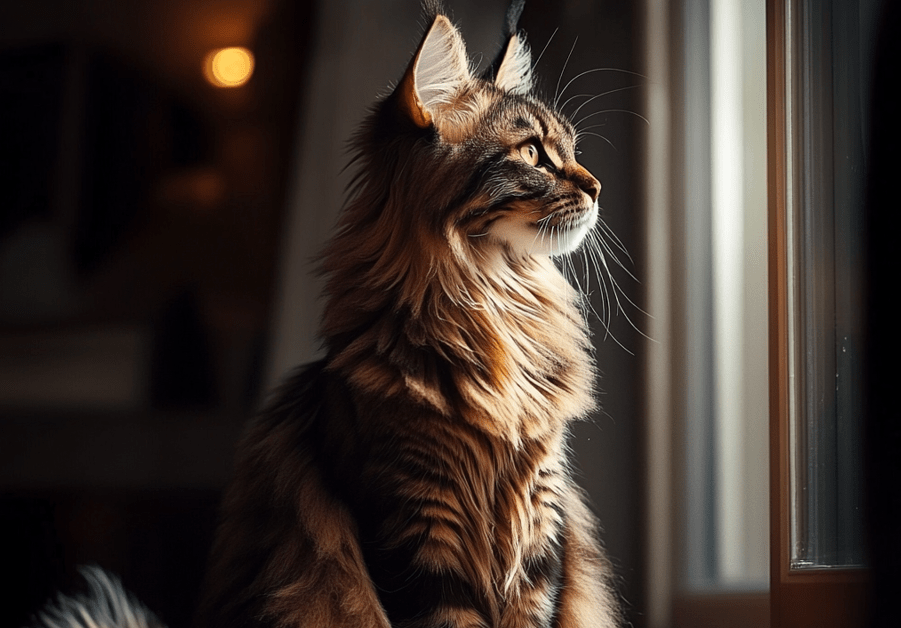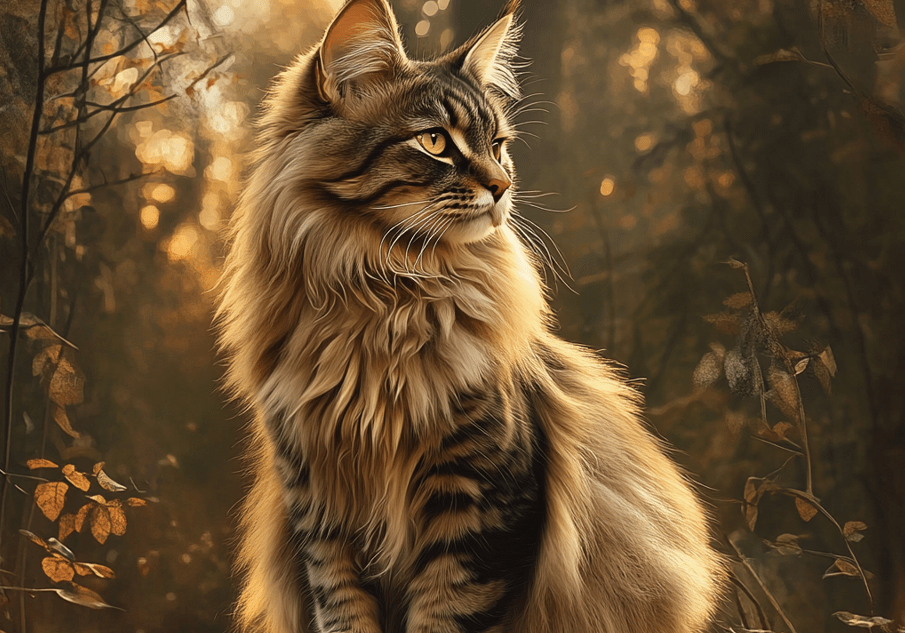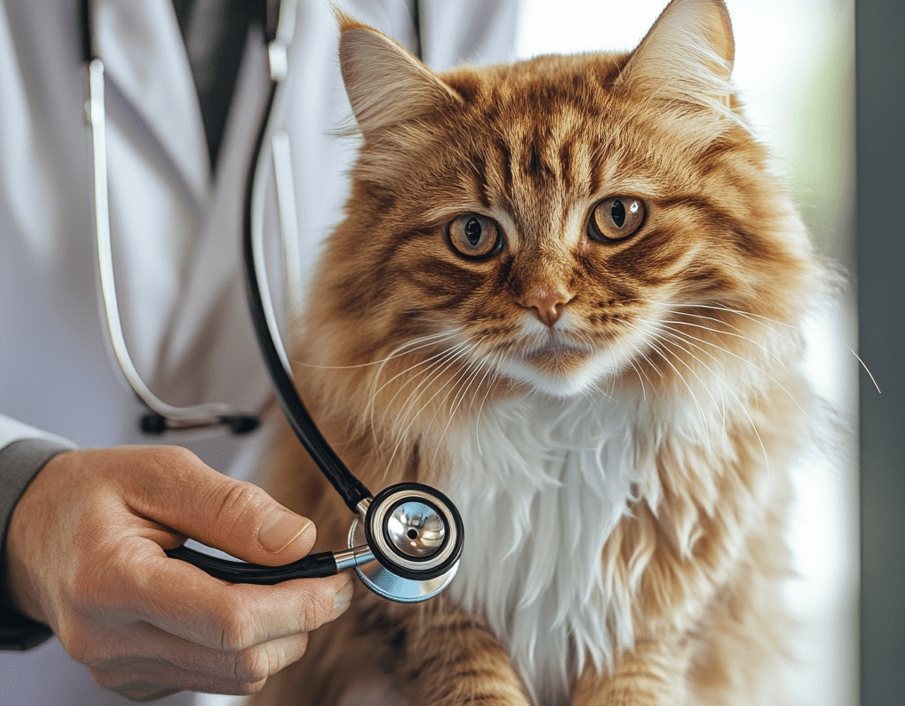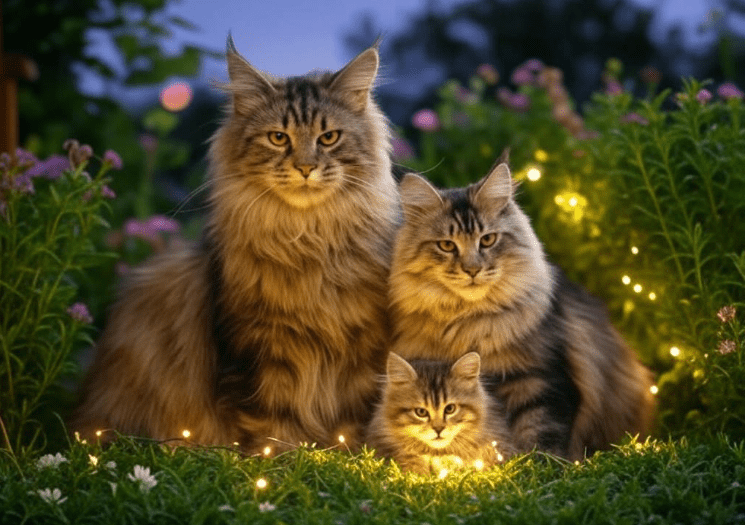
Maine Coon jumping problems can be a concerning sign for owners of these large, athletic cats, known for their agility and playful nature. As “gentle giants,” Maine Coons typically love to leap onto high perches, but when they struggle or hesitate to jump, it may indicate underlying health or mobility issues. This comprehensive guide explores the causes of Maine Coon jumping problems, early warning signs, when to seek veterinary care, and actionable steps to support your cat’s mobility. By understanding these issues, you can help your Maine Coon stay active and healthy for years to come.
Why Maine Coons Are Natural Jumpers
Maine Coons are built for physical prowess. Their muscular bodies, long legs, and tufted paws give them exceptional balance and jumping ability. These traits, rooted in their history as hardy farm cats in New England, make them adept at scaling furniture, cat trees, or even countertops. However, when Maine Coon jumping problems arise, it’s often a signal that something is affecting their physical or mental well-being. Recognizing the difference between normal behavior and problematic symptoms is key to addressing mobility issues early.
Common Causes of Maine Coon Jumping Problems
Maine Coon jumping problems can stem from a variety of factors, ranging from medical conditions to environmental or behavioral issues. Below are the most common causes:
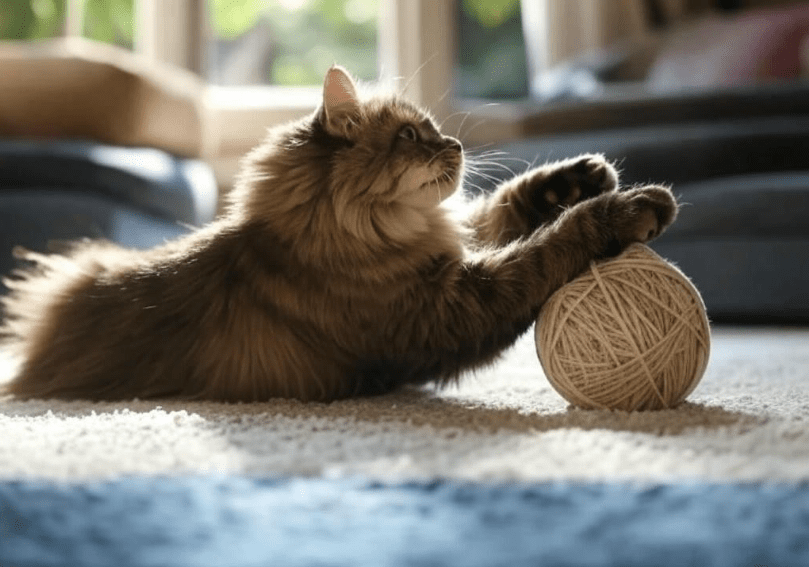
Arthritis or Joint Pain
Maine Coons are prone to arthritis, especially as they age. Joint inflammation can make jumping painful, causing hesitation or refusal to leap. Osteoarthritis is particularly common in large breeds due to the stress their weight places on joints.
Hip Dysplasia
This genetic condition, prevalent in Maine Coons, involves malformed hip joints, leading to pain, stiffness, and reduced mobility. Cats with hip dysplasia may struggle to jump or land awkwardly.
Muscle Weakness or Atrophy
Muscle loss, often linked to aging or underlying diseases like hyperthyroidism or kidney disease, can weaken a Maine Coon’s hindquarters, impairing their ability to jump.
Obesity
Excess weight puts strain on joints, muscles, and bones, making jumping difficult. Maine Coons, with their large frames, are at risk for obesity if their diet and activity levels aren’t managed.
Injuries or Trauma
Sprains, fractures, or soft tissue injuries from falls or rough play can temporarily or permanently affect jumping ability. Even minor injuries may cause a cat to avoid jumping due to pain.
Neurological Issues
Conditions like spinal cord problems, nerve damage, or feline vestibular disease can affect coordination and balance, leading to jumping difficulties.
Vision or Sensory Impairments
Poor eyesight or hearing, common in older Maine Coons, can make cats hesitant to jump due to fear of misjudging distances or landing spots.
Pain from Other Conditions
Dental issues, abdominal discomfort, or systemic diseases (e.g., kidney disease, diabetes) can cause general malaise, reducing a cat’s desire to jump.
Environmental or Behavioral Factors
Stress, lack of confidence, or an unsuitable environment (e.g., slippery surfaces, high perches) may discourage jumping, even in healthy cats.
Age-Related Decline
As Maine Coons age (typically 7+ years), natural wear on joints and muscles can reduce their jumping ability, even without a specific diagnosis.
Early Signs of Maine Coon Jumping Problems
Spotting Maine Coon jumping problems early allows for timely intervention. Watch for these warning signs:
Hesitation or Refusal to Jump: Your cat pauses, crouches, or avoids jumping onto familiar perches like counters or cat trees.
Awkward Landings: Landing heavily, stumbling, or missing jumps suggests pain or coordination issues.
Reduced Activity: A normally active Maine Coon becomes less playful or avoids climbing.
Limping or Stiffness: Favoring one leg, walking stiffly, or struggling to stand after resting can indicate joint or muscle issues.
Vocalizing in Pain: Yowling or hissing when jumping or landing may signal discomfort.
Behavioral Changes: Irritability, hiding, or reduced grooming can accompany mobility problems.
Litter Box Issues: Difficulty entering or exiting the litter box, especially if it has high sides, may reflect jumping struggles.
Weight Gain or Muscle Loss: Visible changes in body condition, like a sagging belly or thin hindquarters, can affect jumping ability.
If you notice any of these signs, monitor their frequency and severity, and consult a veterinarian to determine the cause.
When to Worry About Maine Coon Jumping Problems
Not all jumping problems require immediate concern, but certain red flags warrant urgent attention. Contact your vet if your Maine Coon exhibits:
Sudden Onset: A sudden inability to jump, especially after a fall or trauma, may indicate an injury or neurological issue.
Persistent Pain: Ongoing signs of discomfort, such as limping, vocalizing, or reluctance to move, suggest a serious condition.
Accompanying Symptoms: Jumping problems paired with weight loss, vomiting, increased thirst, or lethargy may point to systemic diseases like kidney issues or diabetes.
Young Cats Affected: Jumping difficulties in kittens or young adults are abnormal and may indicate genetic conditions like hip dysplasia.
Progressive Decline: Gradual worsening of mobility over weeks or months requires evaluation for chronic conditions like arthritis or CKD.
For mild or occasional issues, monitor your cat for a few days, but don’t delay veterinary care if symptoms persist or worsen.
Diagnosing Maine Coon Jumping Problems
A veterinarian will use a combination of physical exams and diagnostic tests to pinpoint the cause of jumping problems. Common steps include:
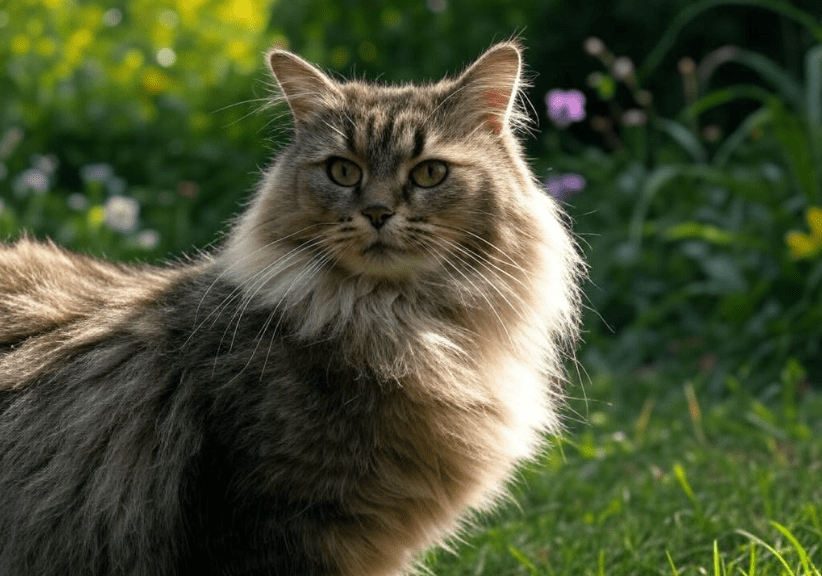
Physical Examination:
1.Assessing gait, posture, and joint flexibility to identify pain or stiffness.
2.Palpating muscles and joints for swelling, heat, or abnormalities.
X-rays or Imaging:
1.X-rays detect arthritis, hip dysplasia, or fractures.
2.Ultrasounds or MRIs may be used for soft tissue or neurological issues.
Blood and Urine Tests:
1.Check for systemic conditions like kidney disease, diabetes, or hyperthyroidism that may cause weakness or pain.
2.Evaluate inflammatory markers for arthritis.
Neurological Assessment:
Tests for reflexes, coordination, and balance to rule out spinal or nerve issues.
Vision and Hearing Tests:
Assess sensory impairments that may affect jumping confidence.
Genetic Testing:
1.For suspected hip dysplasia or other hereditary conditions, especially in young Maine Coons.
2.Your vet may also ask about your cat’s diet, activity level, and recent changes to identify environmental or behavioral factors.
Managing and Treating Maine Coon Jumping Problems
Once the cause is identified, treatment will depend on the underlying issue. Below are common approaches to address Maine Coon jumping problems.
1. Medical Treatments
Pain Management: Non-steroidal anti-inflammatory drugs (NSAIDs) like meloxicam or gabapentin can relieve arthritis or injury-related pain. Always use vet-prescribed medications, as human NSAIDs are toxic to cats.
Joint Supplements: Glucosamine, chondroitin, or omega-3 fatty acids (fish oil) support joint health and reduce inflammation. Consult your vet for appropriate products.
Antibiotics or Surgery: For infections or severe injuries, antibiotics or surgical intervention (e.g., for fractures or hip dysplasia) may be necessary.
Treatment for Systemic Diseases: Managing conditions like kidney disease or diabetes with diet, fluids, or medications can improve overall mobility.
Weight Loss Plans: For obese cats, a vet-supervised weight loss diet and exercise plan can reduce joint strain.
2. Environmental Modifications
Make your home more accessible to support your Maine Coon’s mobility:
Low-Entry Litter Boxes: Use wide, shallow litter boxes to reduce jumping effort.
Ramps or Steps: Install pet stairs or ramps to help your cat reach favorite perches without jumping.
Non-Slip Surfaces: Add rugs or mats to slippery floors to improve traction.
Lower Perches: Provide sturdy, low platforms as alternatives to high furniture.
Heated Beds: Warm bedding can soothe arthritic joints, especially in winter.
3. Physical Therapy and Exercise
Gentle exercise can maintain muscle strength and joint flexibility:
Interactive Play: Use feather wands or laser pointers for low-impact activity to keep your Maine Coon moving without overexertion.
Stretching Exercises: Encourage gentle stretching by placing treats on low platforms to promote movement.
Physical Therapy: In some cases, a vet or pet rehab specialist may recommend structured therapy, like hydrotherapy, for severe mobility issues.
4. Dietary Adjustments
A balanced diet supports mobility and overall health:
High-Quality Protein: Feed foods with named meat sources to maintain muscle mass.
Weight Control: Use measured portions to prevent or reduce obesity, which exacerbates jumping problems.
Joint-Supporting Nutrients: Look for diets with omega-3s, glucosamine, or antioxidants to support joint and muscle health.
Hydration: Incorporate wet food or water fountains to promote kidney and urinary health, which can indirectly affect mobility.
5. Behavioral Support
If stress or fear contributes to jumping problems:
Create a Safe Space: Offer cozy hiding spots or perches where your Maine Coon feels secure.
Use Pheromone Diffusers: Products like Feliway can reduce anxiety and boost confidence.
Positive Reinforcement: Reward successful jumps or activity with treats or praise to build confidence.
6. Regular Veterinary Monitoring
Schedule follow-up visits to track progress, adjust treatments, or catch new issues early.
For chronic conditions like arthritis or hip dysplasia, biannual exams are recommended for cats over 7 years.
Preventive Measures for Maine Coon Jumping Problems
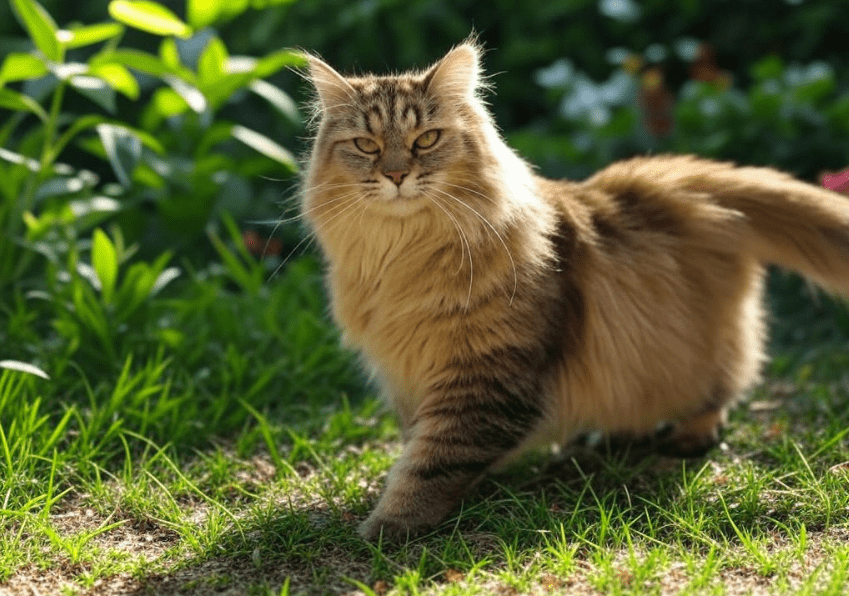
While some causes of jumping problems are genetic or age-related, you can take steps to minimize risks:
Maintain a Healthy Weight:
1.Feed a balanced diet and avoid overfeeding to prevent obesity.
2.Encourage daily play to keep your Maine Coon active.
Support Joint Health Early:
1.Start joint supplements in middle age (around 5-7 years) with your vet’s approval.
2.Provide sturdy scratching posts and cat trees to promote muscle and joint strength.
Screen for Genetic Conditions:
1.If adopting a Maine Coon, choose a breeder who tests for hip dysplasia and other hereditary issues.
2.Request X-rays or genetic screening for young cats with a family history of mobility problems.
Create a Cat-Friendly Environment:
1.Ensure perches and furniture are stable and appropriately spaced to prevent falls.
2.Use non-slip surfaces to reduce the risk of injury.
Regular Vet Checkups:
1.Annual exams for young cats and biannual for seniors can catch joint, muscle, or systemic issues early.
2.Monitor for conditions like kidney disease or hyperthyroidism, which can affect mobility.
Common Mistakes to Avoid
When addressing Maine Coon jumping problems, steer clear of these pitfalls:
Ignoring Early Signs: Hesitation or minor stiffness can escalate if not addressed promptly.
Using Human Medications: Never give your cat human pain relievers like ibuprofen, which are toxic.
Forcing Activity: Pushing a cat to jump or play when in pain can worsen injuries.
Neglecting Weight Management: Overfeeding or ignoring weight gain increases joint stress.
Assuming Age-Related Decline: Don’t dismiss jumping problems as “just aging” without a vet’s evaluation.
When to Consult a Specialist
For complex or persistent jumping problems, consider:
Veterinary Orthopedist: For severe arthritis, hip dysplasia, or injuries requiring surgery.
Neurologist: If neurological issues like spinal problems are suspected.
Feline Behaviorist: For behavioral or stress-related jumping avoidance.
Rehabilitation Specialist: For physical therapy or advanced mobility support.
Long-Term Strategies for Mobility
To ensure your Maine Coon maintains mobility over their lifetime:
Stay Proactive: Regular vet visits, a balanced diet, and a safe environment prevent many issues.
Adapt as They Age: Adjust your home and routines to accommodate senior Maine Coons with reduced mobility.
Monitor Changes: Keep a log of jumping ability, activity levels, and symptoms to share with your vet.
Strengthen Your Bond: Spend quality time playing and interacting to notice subtle changes in behavior or mobility.
Conclusion

Maine Coon jumping problems can range from minor behavioral quirks to serious health concerns, but with careful observation and proactive care, you can address them effectively. By recognizing early signs—such as hesitation, awkward landings, or reduced activity—you can seek veterinary care to diagnose and treat underlying issues like arthritis, hip dysplasia, or systemic diseases. Environmental modifications, medical treatments, and preventive measures like weight management and joint support can help your Maine Coon stay agile and comfortable. With love, vigilance, and the right strategies, you can ensure your gentle giant enjoys a mobile, happy life for years to come.

